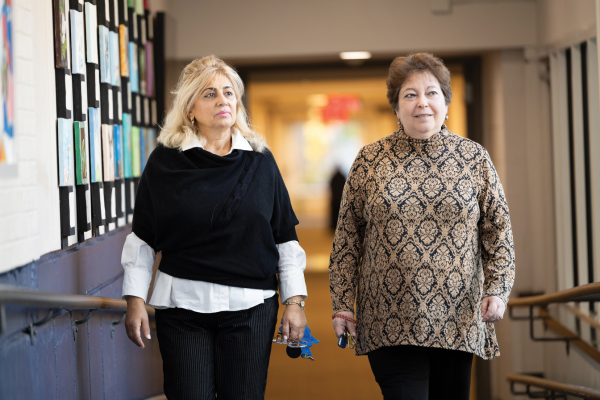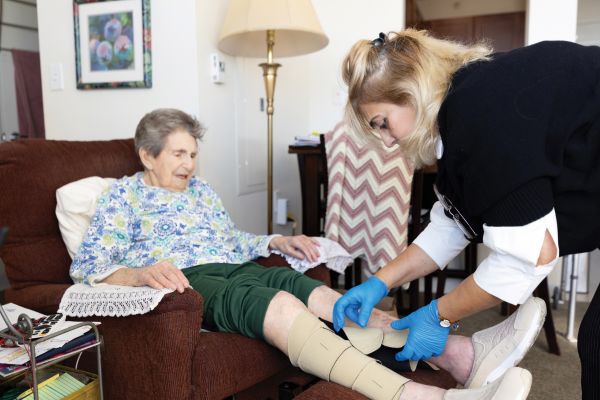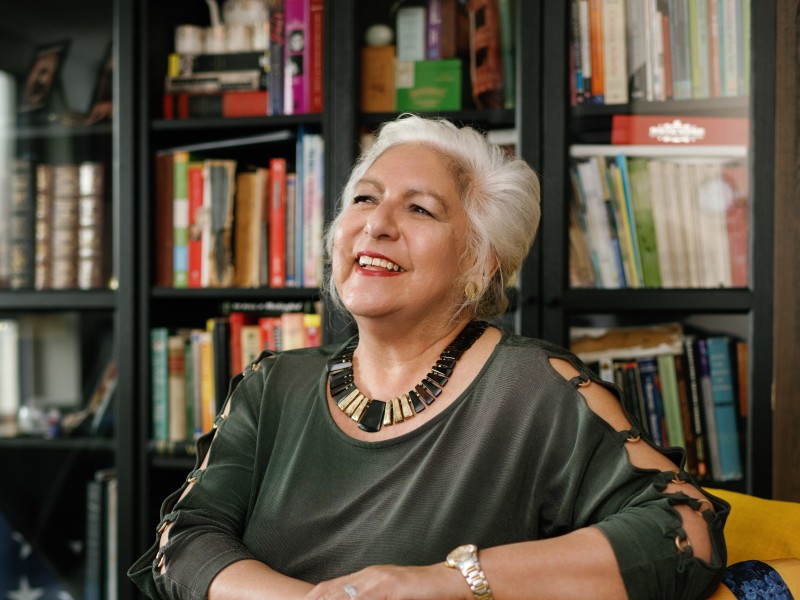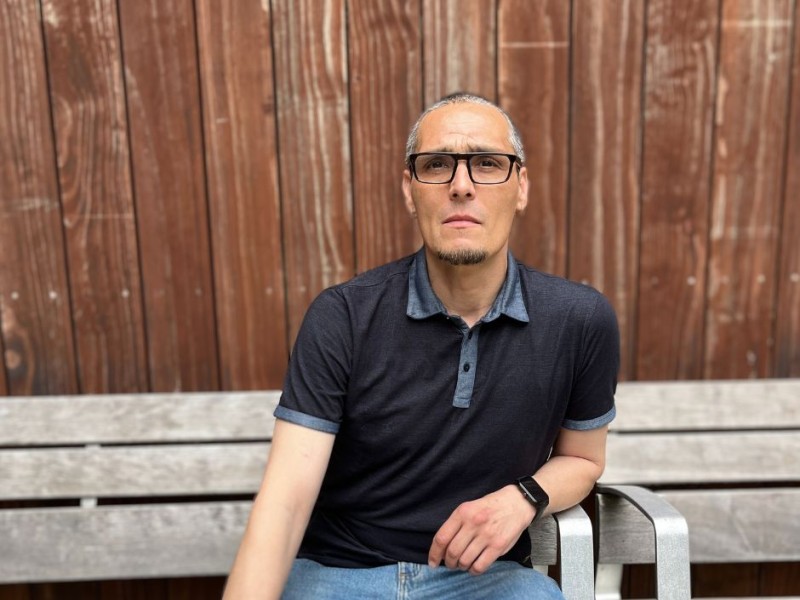Integrating housing, health care, and home care: A multidimensional approach to aging well

In our society, many older adults with modest means face three pressing challenges. First, they struggle to find housing that is affordable, adaptable, and service-enriched. As a result, they overpay for housing and sacrifice things like proper nutrition and medication. Second, they struggle to navigate a complex healthcare system that can be confusing and costly. This often causes them to avoid seeking preventive care, which can lead to more expensive and high-risk emergency care. And third, when care is needed, they struggle to find and afford private home-care services to help with daily activities, such as bathing, dressing, and cooking. So, the 80% of older adults who will need assistance at some point, will go without — and otherwise manageable activities can spiral into chronic health and wellness challenges.
Too often, these challenges are treated as distinct problems that require separate solutions. In reality, housing, health care, and home care are a single, three-dimensional challenge. And we need the kind of integrated solution that, with few exceptions, currently exists only in high-end senior living communities for the wealthy.
An outdated model
The current siloed approach to caring for people as they age creates inefficiencies and generates unnecessary costs for individuals and government programs. More importantly, however, older adults may miss opportunities for important preventive care, early detection of health conditions, and daily home care support that could improve their quality of life and help them continue to live in a community rather than in a medical setting.
Failing to meet older adults’ needs for affordable housing, health care, and home care also creates financial insecurity. Massachusetts ranks last in the nation for elder economic security, forcing seniors to make difficult choices. Will they pay for an expensive ride to the doctor that Medicare won’t cover, or will they pay their rent or utility bills? Will they pay for private home care that Medicare won’t cover, or will they eat today? The physical and mental health implications of navigating these difficult choices alone — combined with the economic insecurity created by expensive private-pay options — can be devastating.
A model that integrates housing, health care, and home care better meets the health, social, and financial needs of older adults and is less costly to society at large.
The role of affordable community living
Researchers have established that the lack of a stable, comfortable, and adaptable home has a major impact on one’s health, especially for older adults. Add to this the fact that social isolation is associated with a significantly increased risk of heart disease, stroke, and premature death. Plus, according to a U.S. surgeon general report, isolation accounts for an estimated $6.7 billion in excess Medicare spending annually, largely due to increased hospital and nursing home spending.
The solution starts with high-quality affordable housing with supports and services for older adults that is also adaptable so living spaces can be altered as physical needs change. Living in a community also provides the mutual support and connectedness that helps to prevent social isolation and loneliness.
Bringing health care to the home
Bringing housing and health care together has immediate benefits. First, site-based health care is more accessible, which helps ensure residents’ needs are understood and addressed early. This, in turn, can prevent conditions from escalating to the point of emergency department visits or hospitalizations, both of which cause stress and confusion and typically lead to declining, rather than improved, health. With site-based health care, residents can maintain a higher quality of life while reducing avoidable — and expensive — interventions. Integration can take the form of healthcare providers visiting a housing community or even having routine healthcare services provided on site through innovative partnerships.

The Congregate Housing Services Program (CHSP) provides grants to nonprofit housing sponsors for services to help prevent premature and unnecessary institutionalization of frail elders.
Care coordination is also more effective in an integrated model. At 2Life, resident services coordinators (RSCs) provide a vital personal link between residents and a range of care providers. RSCs start by conducting a comprehensive annual assessment with each resident that can then, with resident consent, inform the care decisions of health care providers. This leads to more timely and appropriate care. RSCs also help residents navigate the complex administrative process for obtaining health and home care benefits, ensuring more affordable and comprehensive coverage. Creating trusting, reciprocal relationships with residents and their families enables a more nuanced assessment of needs, identifies issues before they become critical, and facilitates collaboration between residents, their families, and health care and other service providers to address issues proactively.

CHSP Home Health Aide Donara Grigoryan walks with CHSP Manager Valerie Kener.
Every 2Life community has live-in staff who provide 24/7 assistance, responding rapidly when a resident calls for help using their emergency pull cord and assessing when someone is confused, lonely, or in need of professional help. Remarkably, they address 92% of calls without ever having to call 911.
Putting home care within reach
An integrated approach also breaks down barriers to home care. These services are quite costly — with a typical rate of $30 to $40 per hour — and subsidies are only available to applicants with incomes well below the federal poverty line. In fact, the average annual cost of home care in Massachusetts is $58,000, which far exceeds the $31,712 median income of Massachusetts retirees. In addition, most home care providers require a minimum contracted weekly commitment that far exceeds the small amount of assistance most older adults need.

CHSP home health aides are one part of the extensive on-site support system available at our Brighton campus which also includes physical therapists, visiting nurses, and homemakers.
Providing home care services in a community setting has tremendous benefits for those who must pay privately — as well as for the government. A home care provider can assist one resident for an hour or two, then work with others in the same location. Spreading the travel and administrative costs across multiple residents eliminates the need for high-cost minimum purchases and makes government subsidy expenditures far more efficient. Sharing the cost is a viable way to close gaps and maximize the value of home care.
Benefits for all
This three-pronged integration is a creative approach for meeting the needs of people as they age, and it solves many of the shortcomings of the traditional siloed model of care with measurable financial, emotional, familial, and health benefits.
For older adults, it offers the promise of improved health, better quality of life, and the joys that come from living in a dynamic, supportive environment.
For families, knowing that a parent or loved one is living in an environment where all their needs are being met is a tremendous comfort. It can also help relieve the pressure on family caregivers to compromise their own well-being to take care of an older relative. Instead, family visits can focus on the joys of sharing time together.
For service providers, integration allows a more consistent and predictable delivery of services, and the promise that residents are getting the care they need to stay healthier. Eliminating redundancies offers greater economies of scale, reducing avoidable costs and freeing funds to expand services to more older adults.
For housing providers, happier, healthier residents foster a stronger community. And access to convenient and affordable care that promotes wellness means more stable tenancies with fewer costly turnovers.

CHSP aides assist residents who are more frail and may need just a little support with things such as getting compression stockings on in the morning and taken off in the evening.
For payers, including government-funded Medicare and Medicaid, an integrated approach offers significant cost efficiencies including reduced health care utilization by reducing emergency department visits, costly rehospitalizations, and unnecessary nursing home admissions. With more than 10,000 baby boomers turning 65 every day, improving economic efficiency is a critical priority for insurers and taxpayers alike.
Integrated housing, health care, and home care is an idea whose time has come. And, quite simply, it just makes sense.


